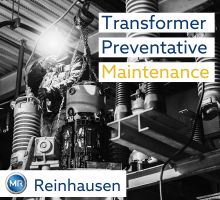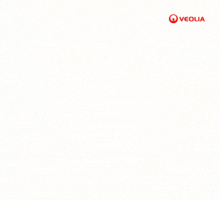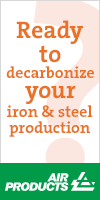Ryerson Reports 2nd Quarter 2007 Results
08/02/2007 - Ryerson Inc. reported net income of $38.1 million on sales of $1.6 billion for the second quarter, and net income of $66.2 million on sales of $3.3 billion for the six months ended June 30, 2007.
Ryerson Inc. reported net income of $38.1 million on sales of $1.6 billion for the second quarter, and net income of $66.2 million on sales of $3.3 billion for the six months ended June 30, 2007.
Second-Quarter Results—The $38.1 million net income ($1.20 per diluted share) compares with net income of $22.2 million ($0.76 per diluted share) in the second quarter of 2006 and net income of $28.1 million ($0.91 per diluted share) in the first quarter of 2007. Results included a $4.6-million ($0.15 per share) benefit from an income-tax settlement.
|
Ryerson presents supplemental results on a FIFO basis, in addition to its reported results on a LIFO basis.
Supplemental FIFO earnings per diluted share would have been $2.02 in the second quarter of 2007, compared with $1.51 in the second quarter of 2006 and $1.20 in the first quarter of 2007.
|
"We demonstrated excellent cost control, continued inventory reductions, and improvement based on short-term initiatives, which we began implementing in the third quarter of 2006," said Neil S. Novich, Chairman, President, and CEO of Ryerson. "Those factors, coupled with metal price increases, more than offset a decline in volume, which moved in line with the metal service center industry."
Sales of $1.6 billion reflect a 7.2% increase compared to the year-ago period, as a 17.5% rise in the average selling price per ton offset an 8.8% decline in tons shipped. Sequentially, sales declined 2.7% from the first quarter of 2007 on a 1.1% increase in the average selling price per ton and a 3.7% decline in tons shipped.
Gross profit per ton was $298, compared to $265 in the second quarter of 2006 and $307 in the first quarter of
2007. Inventory reductions resulted in a LIFO liquidation gain of approximately $32 million ($40 per ton), which compares to a gain of $18 million ($22 per ton) in the first quarter of 2007. The gross margin of 14.7% compares with 15.4% in the second quarter of 2006 and the first quarter of 2007. Despite the $32-million liquidation gain, second quarter 2007 gross profit would have been approximately $43 million higher under FIFO inventory accounting than as reported under LIFO due to rising material costs, particularly in stainless steel.
Operating expenses were $168.7 million, compared to operating expenses of $179.5 million in the second quarter of 2006 and $186.2 million in the first quarter of 2007. Year-over-year and sequentially, lower expenses reflected the benefit of various cost-savings initiatives, including the Integris integration and the company's Six Sigma problem-solving and continuous improvement process, which resulted in the improvement in wages, salaries, benefits, and service center operating expenses. Sequentially, operating expenses also benefited from lower non-cash stock-based compensation.
Interest expense was $15.2 million, compared to $15.8 million in the second quarter of 2006 and $24.5 million in the first quarter of 2007. The current expense included $5.6-million of one- time, non-cash write offs.
Financial Condition—Ryerson ended the second quarter of 2007 with a debt-to-capital ratio of 54.1%—the lowest level since the Integris Metals acquisition in January 2005—compared to 60.2% at the end of the first quarter. Combined availability under the amended revolving credit facility and the new receivable securitization facility expanded to $618 million, compared to $451 million at the end of the first quarter.
Over the quarter, Ryerson continued to make strong progress improving inventory management, with inventory reaching 764,000 tons by the end of the second quarter—the lowest level since the acquisition of Integris Metals. The quarter-end inventory represents a decline of 111,000 tons (13%) from the end of the first quarter.
From year-end 2006, inventory declined 282,000 tons (27%). Inventory dollars declined $40 million from the end of the first quarter of 2007 to the end of the second. If metals prices had remained constant from the end of the first quarter, current-value inventory would have declined approximately $150 million. Inventory turnover improved to 3.9 times for the second quarter of 2007 and ended the quarter at a run rate of 4.1 turns. Ryerson remains committed to attaining an annualized run rate of 5 turns by the end of the year.
Outlook—"We expect the third quarter of 2007 to be affected by the typical seasonal slowdown," concluded Novich. "And we expect metal prices to soften, particularly in stainless."
Merger Agreement—On July 24, 2007, Ryerson entered into a definitive Agreement and Plan of Merger with Rhombus Holding Corp. (an affiliate of Platinum Equity, LLC) and Rhombus Merger Corp., a wholly owned subsidiary of Rhombus Holding Corp., with Ryerson becoming a wholly owned subsidiary of Rhombus Holding Corp. Under terms of the Merger Agreement (and subject to certain conditions, including stockholder approval), Rhombus will acquire all of the outstanding shares of the company's common stock and Series A $2.40 Cumulative Convertible Preferred Stock for $34.50 per share in cash.
The Merger Agreement contains a "go shop" provision under which the company has the right to initiate, solicit, and encourage third-party acquisition proposals through August 18, 2007. The company notes that there can be no assurance that solicitation of proposals will result in an alternative transaction. After that date, the company is subject to certain restrictions on its ability to solicit third- party acquisition proposals.
The merger is expected to be submitted to Ryerson stockholders for their approval at a special meeting of stockholders to be held sometime in the fourth quarter of 2007. The Merger Agreement has been filed with the SEC in Form 8-K.
Ryerson Inc. is a leading distributor and processor of metals in North America, with 2006 revenues of $5.9 billion. The company services customers through a network of service centers across the United States and in Canada, Mexico, India, and China. Headquartered in Chicago, Ryerson was founded in 1842.



.jpg?lang=en-US&ext=.jpg)



